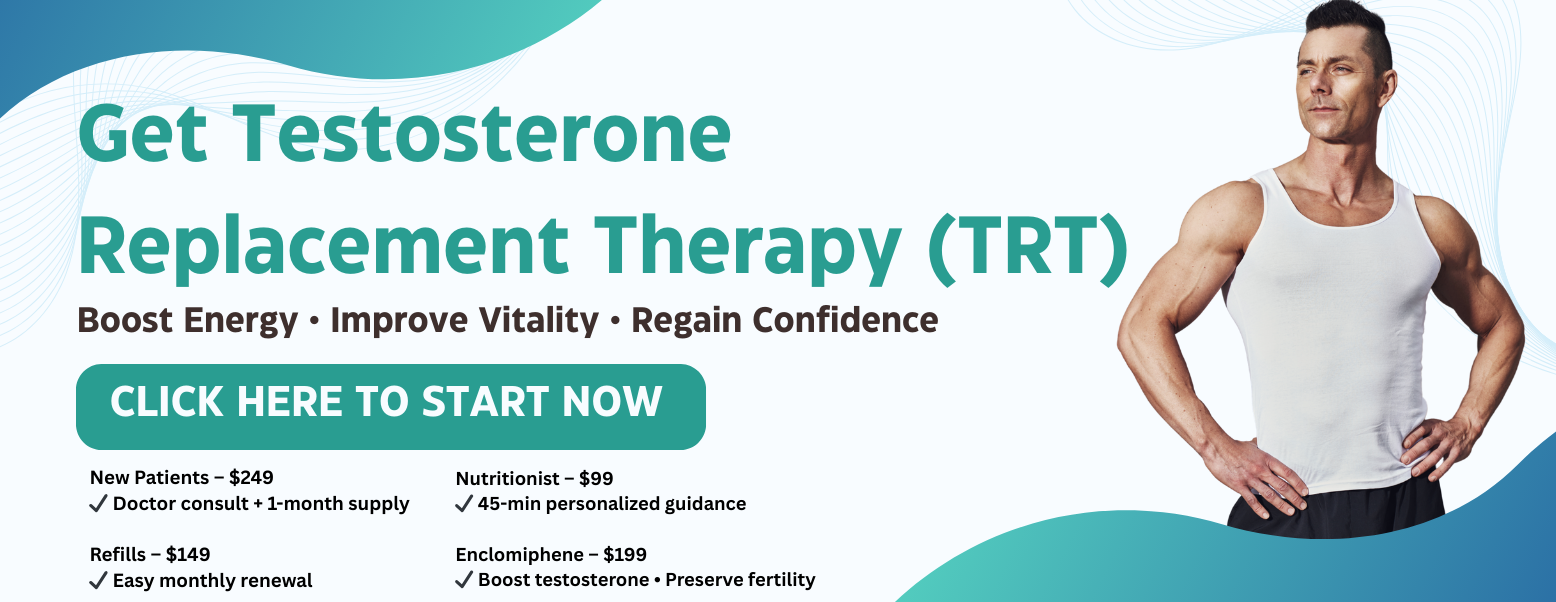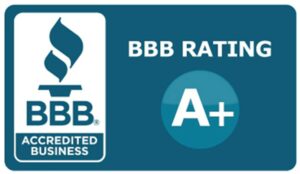At what age should Testosterone Replacement Therapy (TRT) start? You’re not alone. With age, the majority of men become fatigued quickly, lose their sex drive, have less muscle tissue, and are in an irritable mood. Yet, does that mean it is time to put testosterone replacement therapy (TRT) into play? Age is no longer a singular factor as the new guidelines refer to the data and lab-based accuracy of 2025.
Don’t Wait, Reclaim Your Vitality – Click here to Book Your TRT Consultation Now!
This guide will take you through the process of understanding what it means when your testosterone levels naturally decline with age, what symptoms to watch for, and when and whether testosterone replacement therapy (TRT) is a good idea, all alongside the experts.
How Does Testosterone Decline with Age?
The level of testosterone in men starts to reduce after age. It is an entirely normal process of aging and hormone loss, but the rate, symptoms and severity differ in each person. Understanding this degeneration can assist men in finding out when symptoms are clinically significant and when testosterone replacement therapy (TRT) might be a possibility. The condition talks about when and during which period in the life of a man that testosterone tends to decline.
1. Peak Testosterone Levels in the 20s
The average man has the greatest testosterone concentration in his late teens or early 20s. It is the time that facilitates the maximum physical performance, sexual health, and fertility, as well as cognitive sharpness. The total testosterone may be between 600 and 1,000 ng/dL at this stage. Symptoms of deficiency at this stage typically do not occur in most men, provided there are no underlying medical conditions or environmental exposures that affect hormonal function.
2. Gradual Decline Starts in the 30s
Once a man is past the age of 30, testosterone production starts to decline at the rate of about 1%-2% annually. Some people will not notice this decline, and some will feel minor alterations in their energy, concentration, or sex drive. This shift is deemed normal, but it may speed up due to poor lifestyle choices, obesity, or constant stress. Being able to catch this decline early will allow men to avoid making their symptoms compound with time.
3. Symptoms Often Appear in the 40s
In middle age, a slow decline in testosterone can become more noticeable in men, particularly in their 40s. Symptoms such as constant fatigue, loss of muscle tissue, and a decrease in sexual performance are reported rather often. It can also become more mentally cloudy and unstable. These symptoms are commonly ignored or written off as a part of the aging process, yet more often than not, low testosterone is the cause of these symptoms, and it should be checked.
4. Andropause in the 50s and 60s
Symptoms of testosterone deficiency become more severe in the 50s and 60s, a period which is sometimes called andropause. Similar to the menopause in females, this transition can bring some drastic changes, such as the loss of bone density, gaining weight around the abdomen, irritability, and a loss of interest in sexual activity. Most men visit the doctor to seek assistance at this stage and may be eligible for medically supervised testosterone replacement therapy (TRT).
5. Lifestyle and Health Status Can Accelerate Decline
There is not only an age-related decline in testosterone. Men who have low-quality sleep and sedentary lives, alcohol consumption, diabetes, and those with excess body fat can expect an even more rapid decline in hormones. Testosterone suppression is also caused by sleep apnea
and drugs such as opioids. Before a man starts TRT, it is vital to monitor his lifestyle factors because sometimes natural changes can postpone or minimize the necessity of this therapy.
Signs You May Need TRT at Any Age
Age alone is not an indication to seek testosterone replacement therapy (TRT). The trick is to be able to identify symptoms that are highly associated with low testosterone, which a blood test will confirm.
Constant exhaustion and lack of energy: Low T can be a contributing factor to persistent fatigue that interferes with daily activities, such as work or exercise, or in relationships.
Reduced sex drive and erectile dysfunction: Testosterone is key to arousal and potency; unexplained loss may indicate hormonal issues.
Foggy brain, mood fluctuation, or depression: Cognitive lethargy, anger or depression could be a result of hormonal imbalance.
Body fatness + muscle loss: Testosterone helps maintain lean body mass and metabolism; shifts in this direction may be an echo of low testosterone levels.
Lab validation: Before considering treatment, a serum testosterone test must be taken and properly interpreted by a qualified healthcare professional.
Benefits of Starting TRT Early
Restorative and preventative effects can be observed in men when testosterone therapy is implemented at the initial phases of the decline, usually in the 30s or early 40s. Instead of letting the symptoms develop into severe conditions, early treatment ensures long-term health. The following are the primary benefits of initiating testosterone replacement therapy (TRT) at an early stage.
1. Preserving Lean Muscle Mass and Strength
Testosterone plays a crucial role in maintaining muscle mass and strength. Once the levels begin to drop in the early 30s or 40s, initiating testosterone replacement therapy (TRT) may help maintain physical fitness and metabolic health. It is particularly significant for active men who wish to continue training or competing. Early prevention of muscle atrophy also lessens the possible risks of insulin resistance and frailty in old age.
2. Boosting Energy and Mental Clarity
Most men complaining of mental fog and fatigue feel much better just a few weeks after they begin TRT. Timely therapy prevents the loss of motivation, productivity, and concentration—attributes that are crucial in the profession or when caring for children. Instead of dragging butts through the day, optimized testosterone can rejuvenate a sense of youthful energy and endurance.
3. Supporting Sexual Performance and Libido
Low sex drive or stage fright could be among the initial indicators of dropping testosterone. To continue enjoying sex into middle age, it is possible to start TRT as soon as the first symptoms of dysfunction appear. It even averts the emotional stress which usually accompanies sexual difficulties, enhancing relationships and self-esteem.
4. Enhancing Mood and Emotional Resilience
Low testosterone is associated with irritability, anxiety and even depression. Early initiation of testosterone replacement therapy (TRT) has been shown to stabilize mood and improve emotional resilience. It can make men more confident, calmer, and more connected, which is essential for mental health, being a good leader, and maintaining proper relationships in the social sphere during the busiest decades of life.
5. Preventing Age-Related Health Issues
Early TRT can decrease the possibility of the development of such conditions as metabolic syndrome, cardiovascular problems, and osteoporosis. Testosterone helps maintain bone density, red blood cell manufacturing and vascular integrity. The earlier it starts, the less harm is done before treatment commences and therefore, the more likely it is to sustain health and well being in the long run.
Limitations of Starting TRT Late (40s/50s/60s+)
Late-onset TRT can also provide meaningful improvements in certain aspects, yet specific complications and drawbacks accompany it. The elderly tend to be taking medications, have chronic medical conditions, or hormonal dynamics in which case a slower and more individualized process is safer and more effective.
1. Possible Prostate Health Issues
Though research indicates that TRT does not directly lead to prostate cancer, the likelihood of older men having preexisting problems with their prostate increases. An enlarged prostate gland or benign prostatic hyperplasia (BPH) and a high level of PSA might need thorough consideration before commencing treatment. Periodic testing should be undertaken to make sure that testosterone does not exacerbate urinary symptoms and conceal the early symptoms of the illness.
2. Higher Risk of Cardiovascular Complications
Men above the age of 60 have an increased possibility of having high blood pressure, atherosclerosis, or another heart problem. Initiating TRT without appropriate workup may predispose one to more complications including high red blood cell count or viscous blood. TRT with a late start should be closely monitored and cardiovascular screening should be done regularly in order to prevent adverse effects.
3. Slower or Less Dramatic Results
The more advanced the body in age, the slower it is likely to react to hormonal optimization. Men who begin TRT in their 60s can improve, although it can take months and possibly not correct long-term symptoms. More than that, years of muscle wasting or sexual dysfunction might not be entirely reversible without excessive lifestyle interventions in addition to remedy.
4. Managing Pre-Existing Conditions and Medications
Older patients will have greater chances of being on blood pressure, diabetes, or cholesterol medications. TRT may interact with these medications or alter laboratory values, so it is essential to coordinate with primary care providers. Chronic disease and polypharmacy may complicate treatment and need a more conservative and personalized treatment approach.
5. Risk of Over-Supplementation or Misuse
Some older men who are eager to find quick solutions may be tempted by unregulated or even hyper-aggressive TRT regimens. It may cause side effects such as acne, mood changes or even risky high hematocrit levels. Late initiation of TRT must never be undertaken alone at home or through black-market or so-called anti-aging clinics, but rather under the supervision of a healthcare professional and employing evidence-based and safe practices.
Age Ranges & TRT Indications
| Age | When TRT May Be Appropriate |
| 20–30 | Uncommon unless due to pathology; investigate underlying causes before starting TRT. |
| 30–45 | Consider TRT if symptoms are present and low testosterone is confirmed in blood tests. |
| 45–55 | Fairly common age to benefit; therapy is often well-tolerated and improves quality of life. |
| 55–65 | Typical age, though those with health issues need personalized dosing and medical oversight. |
| 65+ | Possible benefit, but must weigh prostate, cardiovascular, and comorbidity risks carefully. |
Conclusion
The ideal age of TRT does not exist, but rather a matter of when symptoms, labs and priorities line up. In men aged 30s and 40s, TRT may be used to maintain long-term health and vitality. With medical supervision, older men can have tremendous improvements. Men of very young age must go very carefully and ensure that therapy is necessary on medical, not lifestyle, grounds.
Whether you are thinking of TRT at any age, the KIF provides data-based, individualized treatment aimed at maximizing outcomes and protecting long-term health:
- Free Consultation
- New Patient Plan ($249)
- Monthly Refill Subscription ($149)
Take control of your hormonal health—on your terms, with expert backup. Visit TheKIF to get started today.
 Since 2021, Kif offers a streamlined platform to get a medical marijuana card online. We have served more than 45K patients across the United States. Sign Up Now to get the right to use medical cannabis for your health condition without any delay.
Since 2021, Kif offers a streamlined platform to get a medical marijuana card online. We have served more than 45K patients across the United States. Sign Up Now to get the right to use medical cannabis for your health condition without any delay.
























